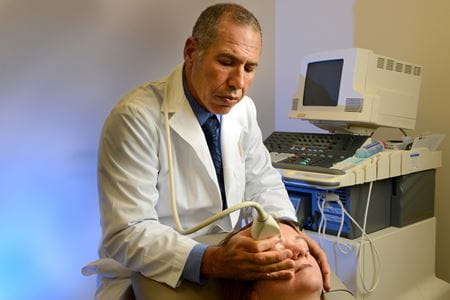It starts with the peripheral vision, so some people don’t notice its effects at first. Slowly, gradually, it creeps through the rest of the eye—but by then the damage is irreversible.
Vision loss caused by glaucoma can’t be undone; and because many patients don’t notice the earliest signs of the eye disease, Alon Harris, MS, PhD, FARVO, calls it “the silent thief.”
Harris, an Indiana University School of Medicine Department of Ophthalmology professor, is the director of the Glaucoma Research and Diagnostic Center at the Eugene and Marilyn Glick Eye Institute.
He’s spent more than 25 years studying glaucoma, its effects and its treatments. During World Glaucoma Week (March 10-16, 2019), he’s sharing new insights of the causes of the disease that fascinates him and drives so much research done within his lab in Indianapolis.
Glaucoma is the result of pressures of fluids within the eye causing damage to the ocular nerve. About 2 to 4 percent of the U.S. population suffers from the disease.
While the only approved therapy for glaucoma is lowering the eye pressure using medications, laser or surgery, it has become apparent that other important contributes and instigators cause the disease. Dr. Harris and his researchers have been studying vascular impacts, such as blood pressure, blood flow to the eye, brain pressure, aging and race, on the progression of the disease. Other labs are also examining the impacts of genetics, familial relationships and autoimmune factors and their ties to glaucoma.
In primary open-angle glaucoma, or POAG—the most common form of the disease—fluid that typically runs unencumbered through the eye builds up, compressing the optic nerve, killing cells in the retina and optic nerve and eventually, if untreated, may lead to blindness.
Signs and symptoms of glaucoma may include loss of peripheral vision, elevated eye pressure and changes to the optic nerve. Risk factors include age and race: people over the age of 40 and people of color, particularly African-Americans, are more prone to the disease. Those with a family history of glaucoma, myopia, other eye diseases or low blood pressure and poor circulation to the eye should also be mindful of the disease.
Harris recommends anyone who falls into those categories undergo regular eye exams, where an ophthalmologist can test vision strength, measure eye pressure and evaluate the ocular nerve structure using a special microscope designed for the eye as well as imaging of the eye.
So much about glaucoma is still unknown, Harris said, including the true causes of those damage-causing pressures as well as different treatment options.
Research is being conducted at the Glaucoma Research and Diagnostic Center at IU School of Medicine to explore if pressure from the low pressure in the brain could also cause glaucoma, Harris said. The school is only one of a few academic centers where such research is being conducted using special imagining equipment to study poor blood flow and oxygen in the back of the eye.
And current medications approved by the FDA to treat glaucoma take into account pressures caused from within the eye, Harris said. In the future, other medications may be needed to address, for example, low blood flow to the eye. Right now, those medications have not been approved.
These aspects of glaucoma are important to understand in order to fully and adequately address the disease, Harris said. He believes that in the future treatments for glaucoma will be tailored to individual patients in hopes to address the specific issues causing their glaucoma, he added.
The IU School of Medicine Glaucoma Research and Diagnostic Center is made of some of the world’s leading laboratories, using a variety of noninvasive imaging equipment to conduct research. Dozens of medical students and residents work within the center each year, under the watchful eyes of department of ophthalmology faculty.
